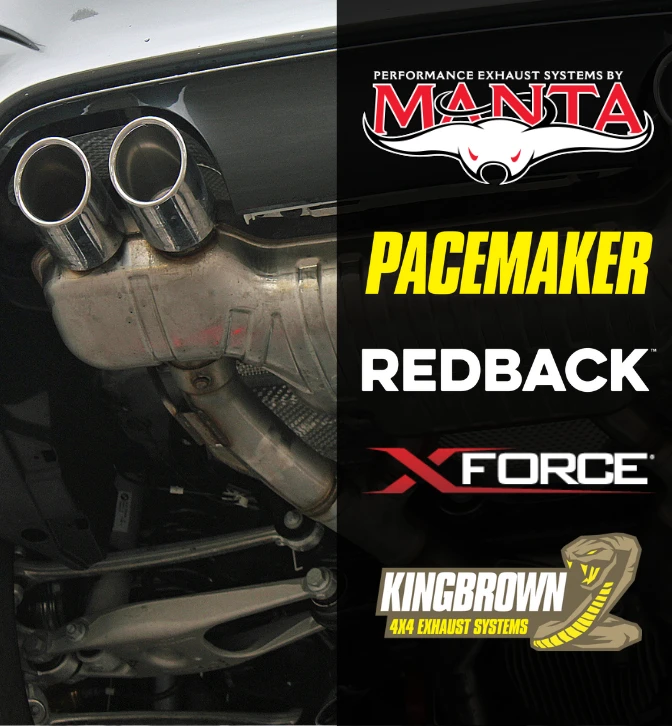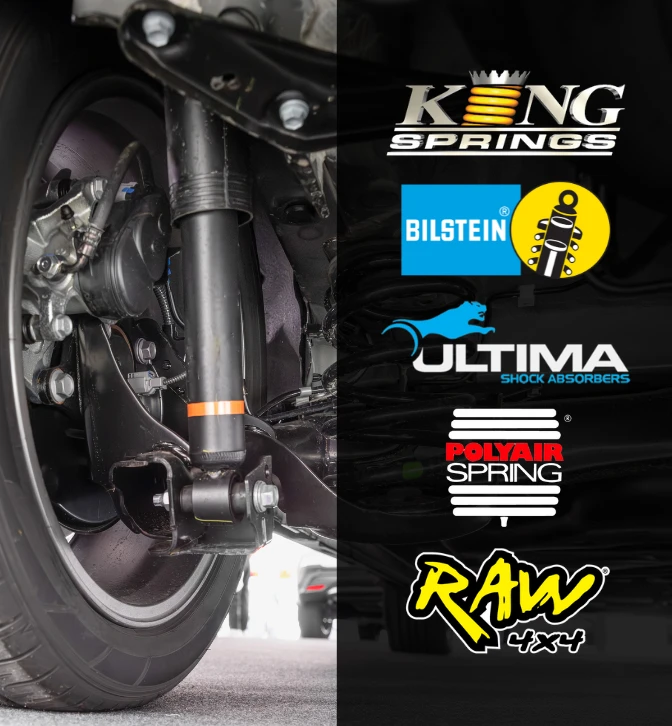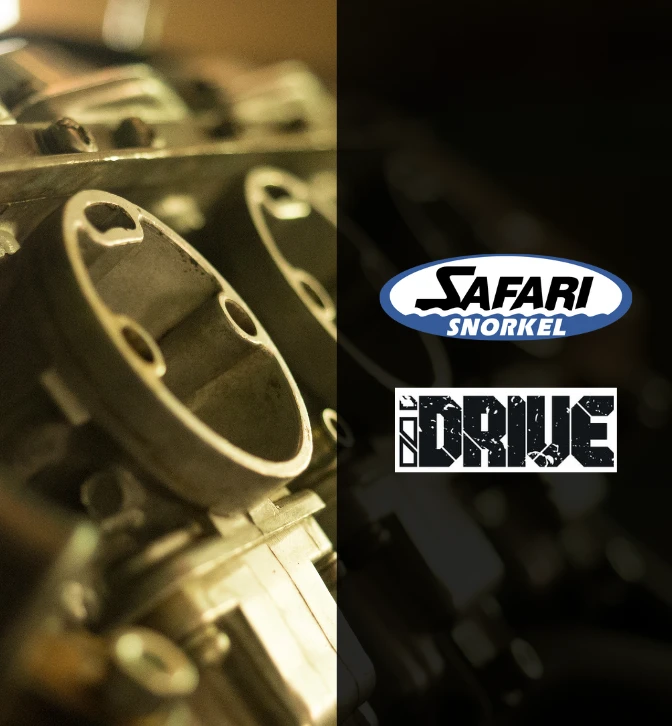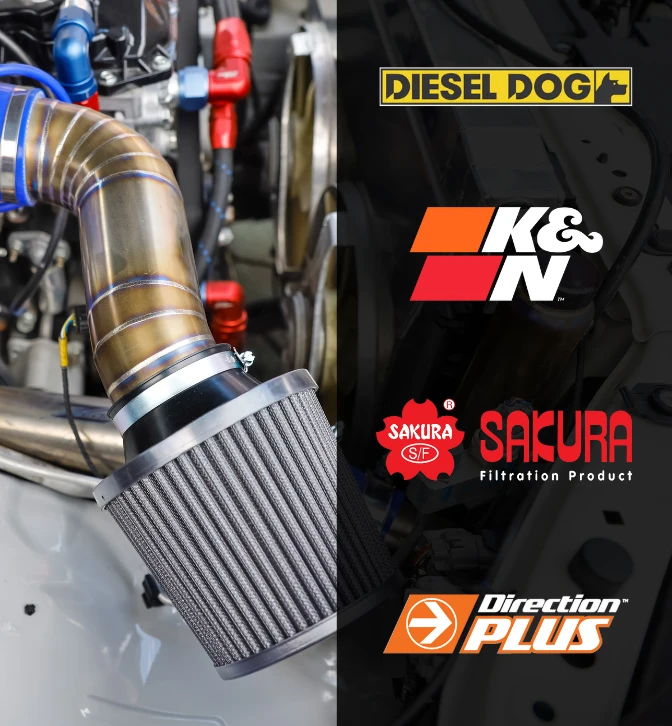-
Exhaust
- Back
- Exhaust
- Performance Exhaust Systems
- Standard Replacement Exhaust Systems
-
Exhaust Accessories
- Exhaust Bolts, Nuts & Studs
- Clamps
- Collectors
- Exhaust Reducers & Couplers
- Exhaust Tips
- Flange Plates
- Exhaust Flex Bellows
- Exhaust Brackets & Hanger Rods
- Gaskets
- Heat Tape
- Mandrel Bends
- O2 Sensors & Exhaust Temperature Sensor Accessories
- Paint
- Muffler & Exhaust Mounting Brackets
- Tube
- X & Y Pipes
- All Exhaust Accessories Products
- Catalytic Converters
- DPF Filters
- Exhaust Extractors / Headers
- Universal Mufflers & Hotdog Mufflers
- All Exhaust Products
![Exhaust]()
- Suspension
- Performance
- Towing
- Filters
- Truck
- On Sale
- About Us
- Blog
- Contact Us
6 Warning Signs of Suspension System Problems
Date Posted: 29 March 2023
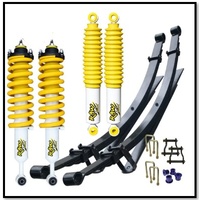
The suspension system in a car plays a critical role in ensuring a safe, comfortable, and enjoyable driving experience. It supports the weight of the car and its passengers by evenly distributing the weight of both the car and its occupants across all four wheels, and absorbs shocks and vibrations when driving on uneven or rough road surfaces. This helps to prevent these shocks from directly affecting the vehicle's components and passengers. Another is that it ensures that the tyres maintain contact with the road surface, which is crucial for steering and braking performance, particularly on uneven terrain. Also, it stabilizes the car during driving, cornering, braking, and acceleration. This promotes better handling and keeps the car secure and safe on the road, may be stiffened for high-speed driving or softened for off-road driving. And it also helps extend tyre life by ensuring even wear and reducing the risk of damage from potholes and other road hazards.
It is crucial to keep the suspension system in good condition and promptly fix any issues that may arise as it can make driving uncomfortable, unsafe, and even cause harm to the vehicle.
Here are the six common signs of suspension problems:
1. Pulling to one side while driving
When your car veers to one side as you drive, it might indicate that the suspension parts are worn out, or there is an issue with the alignment of the vehicle. Check the wheels of the car if it’s aligned, as it can cause you to lose control of your vehicle and potentially cause an accident.
2. One corner of the vehicle appears to be lower than the others
It is essential to examine the tyres first to determine if they are appropriately inflated or if there are any signs of baldness or uneven wear in certain areas. This could be due to a worn out spring, a broken or worn-out shock absorber or strut, or a damaged or broken sway bar. This can affect the stability and handling of your vehicle. You can check out our coil spring and leaf spring products.
3. When you feel every bump in the road
When driving on uneven or bumpy roads, and you experience excessive bouncing or vibration in your car, it may suggest that the shocks or struts are worn out. These are crucial components of the suspension system, responsible for absorbing shocks and vibrations from the road.
One simple way to test your car's suspension system is by performing a bounce test. Here's how to do it:
- Find a level surface: park your car on a flat, level surface. Make sure the car is in "Park" or "Neutral" with the parking brake engaged.
- Push down on the front of the car - position yourself in front of the car and press down on the front bumper. Use your body weight to push down firmly and then release quickly. Observe how the car responds.
- Observe the car's reaction - a car with a healthy suspension system will rebound quickly and come to a smooth stop. If the car bounces up and down more than once, it could be a sign of a suspension problem.
- Test the rear suspension - repeat the same test on the rear of the car. Push down on the rear bumper with the same amount of force and observe how the car responds.
- Take note of any issues - if the car bounces excessively or doesn't rebound smoothly, there may be an issue with the suspension system. Some causes of excessive bouncing include worn-out shock absorbers, damaged springs, or worn-out bushings.
4. Car is diving forward when braking
When the front of a car dips significantly and presses down excessively when brakes are applied, it's known as "diving forward." One possible cause is worn or damaged shock absorbers. Shock absorbers help to control the movement of the suspension system and keep the car stable while braking. If they are worn or damaged, they may be unable to regulate the movement of the suspension system, resulting in the car diving forward.
Another possible cause of diving forward are worn or damaged suspension springs. It absorbs the energy from bumps and vibrations on the road, and also helps to support the weight of the car. If springs are worn or damaged, they may be unable to support the car's weight correctly, resulting in diving forward while braking.
5. Rolling on the side when cornering
When a car leans significantly to one side while turning, it's referred to as rolling on the side, sway, or body roll. This can be a scary experience and can also impact the driver's control of the vehicle. Possible causes of rolling on the side:
- Worn or damaged sway bar links - sway bars help to stabilize the car and reduce body roll when taking corners. If the sway bar links are worn or damaged, it can cause the car to roll excessively when cornering.
- Worn or damaged shock absorbers or struts - shock absorbers and struts help to control the movement of the suspension system and keep the car stable when cornering. If worn or damaged, they may not be able to control the movement, causing the car to roll excessively when cornering.
6. Steering is hard even during slow driving
When the steering is difficult, even while driving at a slow pace, few underlying causes may be:
- Low Power Steering Fluid - check the power steering fluid level to ensure it's at the appropriate level. Low fluid can cause the power steering system to function improperly
- Faulty Power Steering Pump - the pump may not be generating enough pressure to assist with the steering, or it may be failing altogether
- Worn Steering Components - if the steering rack, tie rods, or ball joints, are worn or damaged, they can cause the steering to become hard
- Incorrect tyres Pressure - low tyre pressure can cause the steering to become harder, as it increases the rolling resistance of the tyres
- Faulty Steering Column - in some cases, the steering column itself may be damaged or worn
7. If the shock absorbers or struts seem greasy
This could be a sign of a fluid leak. Shock absorbers and struts are designed to absorb and dampen the impact of the road, and they contain hydraulic fluid that helps to dissipate the energy. It can hinder the effectiveness of the shock absorber or strut, resulting in poor handling and increased wear on other suspension components. Look for visible signs of oil or fluid on the shock absorber or strut. If you see any fluid, it's likely that the shock absorber or strut needs to be replaced.
It is important to have any fluid leaks in the suspension system repaired promptly. Driving with damaged or leaking shock absorbers or struts can be hazardous, and can affect the car's handling and stability. It can also cause uneven tyres wear and damage to other suspension components, resulting in costly repairs.
Ignoring these signs can lead to more serious issues down the line, and can even put your safety at risk. So, if you notice any of the above signs, have your car inspected by a qualified mechanic as soon as possible. Performex Automotive also offers a wide range of lift kit products.
Leave a comment


